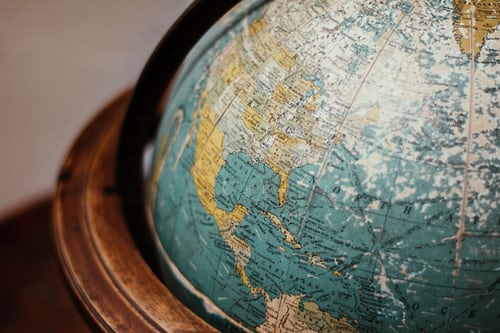Kapanlagi.com - What is the important meaning of symbols to be known by everyone. Because symbols or signs are often used to convey a message or intention. In daily life, we often encounter examples of symbol usage, for example in maps or even on remote control buttons or computer keyboards.
Unfortunately, not many people understand the true meaning of symbols. So, in the end, a symbol is often considered just a normal symbol or image without meaning. However, by understanding a symbol, we can know the intention behind it.
Now, to understand more deeply about the meaning of symbols, let's see the following reviews that have been summarized by kapanlagi.com from various sources.
1. What is the Meaning of the Symbol?

(credit: unsplash)
The use of symbols as a medium of conveying messages or meanings has existed for a long time. The origin of the word 'symbol' itself comes from the Greek language, which means 'sign'. Or more precisely, a sign that can explain something. The word 'symbol' has been absorbed into various languages around the world, including the Indonesian language.
In the Great Dictionary of the Indonesian Language (KBB), the meaning of the symbol is a symbol. Meanwhile, further in the KBBI, a symbol has the meaning of a sign that expresses or contains a certain meaning. Based on the meaning in that dictionary, we can understand that symbols or symbols are not just ordinary scribbles or drawings. Behind every symbol, there is always a certain intention, meaning, or significance.
Another opinion is put forward by Webster (1997). Webster calls a symbol something that represents or explains a form. Symbols can also serve as markers for an object. Webster also mentions that symbols can be used to symbolize something abstract or non-concrete. For example, the heart symbol, which is still known as a symbol of love.
2. Symbol Functions

(credit: unsplash)
As mentioned earlier, a symbol is more than just an ordinary image. A symbol is also not just a decorative image. The meaning of a symbol lies in its function or purpose. In general, here are some functions of symbols.
1) As a medium for conveying meaning or messages.
2) Symbols can be a means of thinking.
3) Symbols can be a reference in solving various problems or finding solutions.
4) Symbols can be a means of revealing facts.
3. The Science of Symbols

(credit: unsplash)
In daily life, the use of symbols is very important in the process of conveying messages. Symbols are widely used to convey a meaning. In fact, the use of symbols as a medium for conveying messages is sometimes more effective than words. For example, in a television remote control, the use of symbols as markers for the function of a button is very useful and proven to facilitate users.
However, in reality, symbols are not always in the form of easily understood images or symbols. Sometimes, a symbol contains hidden meanings or significance, so understanding its meaning requires careful and deeper analysis. Therefore, the field of semiotics or the study of symbols specifically emerged.
In general, semiotics is a discipline that studies signs, including symbols, indexes, and icons. With semiotics, someone can analyze a sign more deeply, both verbally and non-verbally. Semiotics not only studies signs that appear in the form of writing and images, but also generally studies signs that exist in society.
4. Types and Meanings of Symbols in Maps

(credit: unsplash)
In daily life, there are many examples of the use of symbols. Besides on television remotes or other electronic devices, the use of symbols can also be found on maps. More specifically, there are several types of symbol usage on maps.
Understanding the meaning of symbols on a map is also very useful for humans. One of its functions is that symbols on a map can help someone recognize their surrounding environment. Here are some important types and meanings of symbols on maps that need to be known.
1) Point Symbols
Point symbols are one of the most commonly used symbols on maps. Point symbols are used as markers for a location, such as a city. In more detail, usually, various point symbols can be marked on one map.
For example, a red square-shaped point symbol becomes a symbol for the capital city, a red round-shaped point symbol with a red center becomes a symbol for the provincial capital, then a red triangular point symbol for a volcano and a black one for a regular mountain.
2) Line Symbols
Line symbols on maps are used to indicate the appearance of a river, road, or a boundary, both on a regional and national scale.
3) Color Symbols
Color symbols on maps are used to show the difference in contour and the condition of a region in a natural landscape. For example, the water areas on the map are colored blue, green for lowlands, and yellow for highlands.
4) Regional Symbols
Regional symbols or areas are commonly used to indicate a larger natural landscape area. For example, lakes, forests, plantations, rice fields, and so on.
Those are some explanations of the meaning of symbols, along with examples on the map. Hopefully, it is useful and can broaden your knowledge!
(kpl/psp)
Disclaimer: This translation from Bahasa Indonesia to English has been generated by Artificial Intelligence.
















